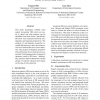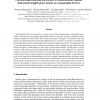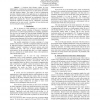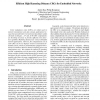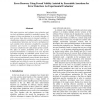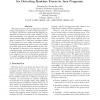CDES
2006
14 years 7 months ago
2006
- Error detection plays an important role in fault-tolerant computer systems. Two primary parameters concerned for error detection are the latency and coverage. In this paper, a ne...
NAACL
2007
14 years 7 months ago
2007
This study investigates whether some speech recognition (SR) errors are easier to detect and what patterns can be identified from those errors. Specifically, SR errors were exam...
DFT
2008
IEEE
14 years 8 months ago
2008
IEEE
Side-channel attacks are nowadays a serious concern when implementing cryptographic algorithms. Powerful ways for gaining information about the secret key as well as various count...
ISQED
2010
IEEE
14 years 8 months ago
2010
IEEE
Recent studies have shown that an attacker can retrieve confidential information from cryptographic hardware (e.g. the secret key) by introducing internal faults. A secure and re...
ICPP
1987
IEEE
14 years 9 months ago
1987
IEEE
-- A hardware fault tolerance scheme for large multicomputers executing time-consuming non-interactive applications is described. Error detection and recovery are done mostly by so...
DSN
2006
IEEE
14 years 10 months ago
2006
IEEE
Cyclic redundancy codes (CRCs) are widely used in network transmission and data storage applications because they provide better error detection than lighter weight checksum techn...
DATE
2004
IEEE
14 years 10 months ago
2004
IEEE
We discuss the problem of concurrent error detection (CED) with bounded latency in finite state machines (FSMs). The objective of this approach is to reduce the overhead of CED, a...
VTS
1999
IEEE
14 years 10 months ago
1999
IEEE
This paper presents a new technique for on-line consistency checking of embedded DRAMs. The basic idea is to use the periodic refresh operation for concurrently computing a test c...
EUROMICRO
1999
IEEE
14 years 10 months ago
1999
IEEE
This paper proposes and evaluates error detection and recovery mechanisms suitable for embedded systems. The purpose of these mechanisms is to provide detection of and recovery fr...
COMPSAC
1999
IEEE
14 years 10 months ago
1999
IEEE
This paper presents a generic approach to statically analyze Java programs in order to detect potential errors (bugs). We discuss a framework that supports our approach and carrie...

